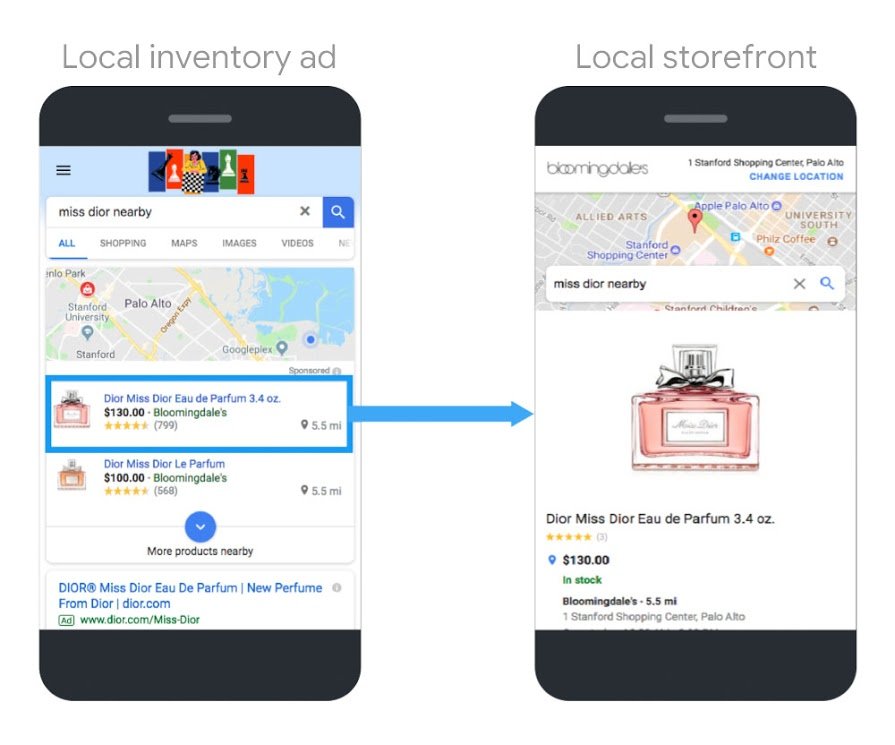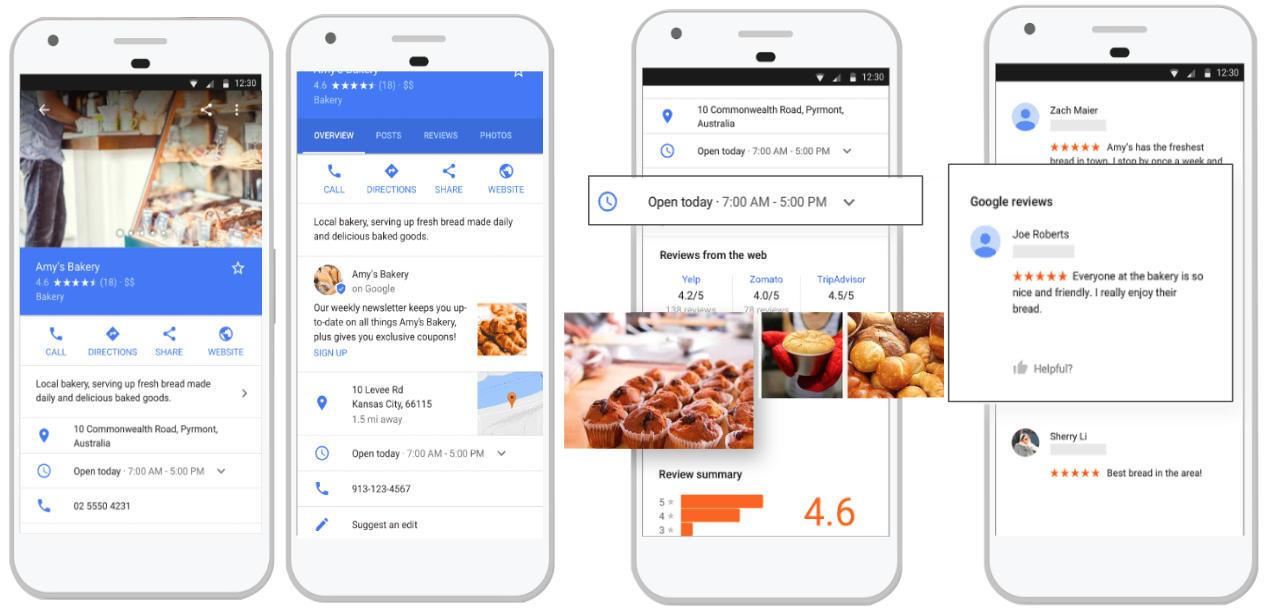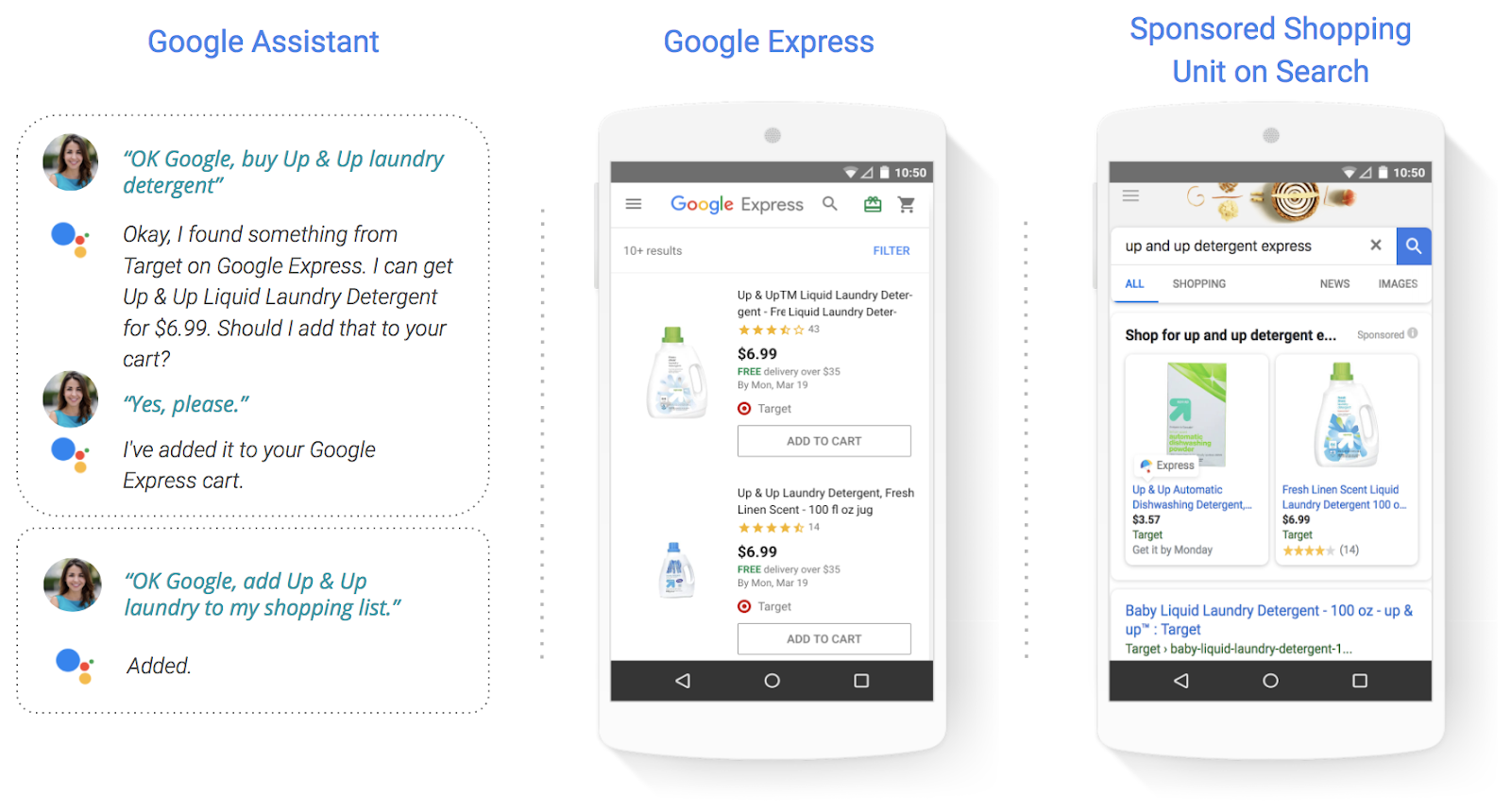Looking for a way to boost your in-store foot traffic? This article is for you!
It’s no secret that today’s consumers are more tech-savvy than ever before. It’s also no secret that ecommerce is booming–now worth 2.3 trillion USD. However, this does not mean that brick-and-mortar is dying. On the contrary, it’s actually thriving. In 2017, 91% of all US retail sales took place in-store, not online.
What is happening in correlation with increasingly digital consumers, however, is the rise of a new phenomenon called ROPO: Research Online, Purchase Offline.
One study suggests that 82% of consumers conduct initial product research online before heading to their local store to make the final purchase. On top of this, Deloitte Insights suggests that 56 cents of every dollar spent in-store have been influenced by digital interaction. So what does this mean for traditional retailers?
If retailers with brick-and-mortar stores want to stay relevant, they need to have an online presence in order to meet their consumer's expectations. The fact is, the growing popularity of ecommerce is only a threat to retailers who choose not to embrace digitalization. For those who do, the trend actually presents a platter of new, revenue-driving opportunities.
In this article, we’ll look at 7 online tactics, that, if well-implemented, can help drive in-store foot traffic to your brick-and-mortar stores, as well as play a role in future-proofing your business.
Without further ado, let’s save the high street.
1. Leverage Local Inventory Ads
Today’s shoppers want convenience when shopping both online and offline. Online, they want a seamless, simple shopping experience. Offline, they want to walk into a single shop and instantly find what they are looking for. According to Surojit Chatterjee, Google Shopping’s head of product, a whopping 80%__ of consumers will visit a physical store if they know their desired product will be there__. In order for retailers to meet this consumer expectation, they need to educate their shoppers on their local offerings before they walk into the shop. This is made possible with Local Inventory Ads.
_Let’s take a look at 3 types of LIAs available to brick-and-mortar retailers:_
Google Local Inventory Ads
As one of the most powerful online ad formats designed for retailers with brick-and-mortar stores, Google LIAs enable retailers to showcase their local, in-store inventory the moment a relevant product search is made on Google.
Once a shopper clicks on your ad, they are redirected to your store’s Google-hosted page, or local storefront. Here they can easily browse through the complete in-store inventory, as well as find store-hours, directions, and information on current promotions, all for the store location nearest to them.

After implementing Local inventory Ads to promote their store-level inventory in real-time to shoppers on Google, Sears saw a 122% increase in foot traffic and earned 8 USD of in-store sales for each dollar they invested on their LIA campaign.
Google LIAs are currently available to retailers in Australia, Brazil, Canada, France, Germany, Japan, UK, and the US.
Bing Local Inventory Ads
Although currently limited to US retailers, Local Inventory Ads on Bing doesn’t differ all that much compared to Google. Here, retailers can provide Bing with store location data, regularly updated inventory information, product details, and more. Like Google, once an ad is clicked, shoppers are redirected to a landing page that features local-store and inventory information.
Facebook Local Inventory Ads
Not unlike that of Google or Bing Local Inventory Ads, Facebook has also developed a revolutionary way for brick-and-mortar retailers to promote their local inventory to the relevant audience. This comes in the form of their now-famous Dynamic Ads for retail format. With these, retailers can dynamically showcase products (and prices) that are available in the shop closest to the person seeing the advert. Fuelled in real-time with your product catalog, if a product sells out at one store, it will no longer be shown to relevant shoppers within the vicinity. The ads are great for educating nearby shoppers on:
- Local product availability
- Product information
- Contact details of the nearest store
- Similar item suggestions
Here's an example of a Dynamic Ad for US retailer, Macy's:
Facebook Local Inventory Ads in-store foot traffic Source: Facebook[/caption]
"Extending the power of Facebook’s dynamic adverts to in-store inventory opens up exciting new possibilities for Macy’s as an omni-channel retailer. We were excited to be the first up and running with Facebook’s dynamic adverts for retail as it truly allows us to personalise product adverts based on online behaviour and inventory at the nearest Macy’s store. This bridges our online and offline channels to deliver a more engaging, relevant, and useful experience to shoppers." – Serena Potter, Group Vice President Digital Media Strategy, Macy's
Facebook offline conversion tracking
To help measure the impact your Facebook ads are having on your offline conversion, Facebook introduced a one-of-a-kind measurement solution. Essentially, it compares offline event data from your CRM system to shoppers who have seen or clicked on your Facebook ads - drawing a correlation between the two. This helps measure not only the effectiveness of your Facebook ads but also your overall return on ad spend.
2. Implement Click-and-Collect or BOPIS (Buy Online, Pickup In-Store)
Over the years, retailers have had to get creative when it comes to digitizing their business. One of the most successful initiatives has been the concept of click-and-collect, also known as BOPIS (buy online, pickup in-store). The idea is simple, offer the convenience of online shopping, with the immediacy and tangibility of in-store buying. This way, consumers are able to pick up their product at their convenience (e.g. on their lunch break), while you are able to save on shipping costs and initiate a lasting customer relationship with your buyers.
Once a shopper is in your store, you also have the opportunity to sell additional items. According to a Bell and Howell study, _69% of holiday BOPIS shoppers in 2017 made additional purchases when picking up their original order_. Moreover, 49% of shoppers claimed to have made unintended purchases when picking up in-store.
For enterprise retailers like Walmart and Home Depot, the BOPIS strategy has already proven effective in boosting in-store sales. In fact, Walmart’s US Ecommerce Chief announced that the retailer would be offering BOPIS in over 2000 stores by the end of 2018.
“We’re combining the accessibility of our stores with e-commerce to provide new and exciting ways for customers to shop," -Walmart CEO Doug McMillon
But Walmart and Home Depot aren’t the only retailers to implement such a strategy. According to Zebra’s 2017 Retail Vision Study, 90% of retailers will implement BOPIS by 2021.
3. Allow in-store returns of online orders
Along the same lines as BOPIS, an increasing number of brick-and-mortar retailers are starting to accept product exchanges and returns of online purchases. This tactic is a great way for retailers to leverage their physical store locations. For the consumer, it provides a level of convenience and efficiency. They no longer have to deal with the shipping and handling of unwanted items. For retailers, it’s a great initiative to get shoppers in their stores, even when the original purchase was made online.
Walmart, for example, has implemented a mobile app that claims to make it possible for customers to handle their in-store returns in about 30 seconds.
"We know returning an item and waiting for a refund, especially for a product purchased online, isn't always seamless -- we've completely transformed the process for our customers." - Daniel Eckert, a senior vice president at Walmart U.S.
Moreover, Kohl’s and Amazon recently established a partnership that allows Amazon shoppers to return items in Kohl’s locations across the US. For Kohl’s, this means more in-store foot traffic and a higher opportunity to convert more in-store shoppers. Overall, it appears to be paying off.
According to a geolocation analysis by Gordon Haskett Research Advisors, participating Kohl’s stores in the Chicago area have seen an 8.5% spike in traffic compared to other locations. Moreover, 56% of shoppers returning items were new Kohl’s shoppers or hadn’t visited the store in the past few months. Not only is Kohl’s able to boost in-store foot traffic, but they are now engaging new shoppers.
“We’re going through one of, if not the, most transformational times in retail, and we have to really think differently ... The retail market is big so there is plenty of room for Amazon and Kohl’s to co-exist.” - Michelle Gass, Kohl’s Chief Merchandising and Customer Officer
4. Offer in-store savings to newsletter subscribers
No matter how tech-savvy the consumer, shoppers love saving money. Consider including exclusive, in-store-only price discounts in your newsletters. These types of promotions help to increase in-store foot traffic to your brick-and-mortar locations, as well as boost in-store sales and online engagement.
What’s important to remember here is that today’s consumers expect a high level of personalization. Therefore, make sure the offer is relevant to each email recipient. For example, if the coupon is only redeemable at California locations, don’t send it to consumers in New York. There are many email marketing tools available that can help you automate these promotions.
5. Engage shoppers through social media
Think of social media (e.g. Facebook, Twitter, Instagram, etc.) as your stage - an unparalleled opportunity to start a conversation with your audience. Social media gives retailers the opportunity to engage with consumers on a more personal level, wherever they are. Not only can they encourage in-store visits through exclusive promotions or events, but they can also build loyalty, monitor their reputations, and nurture existing customer relationships.
On the other end of the spectrum, retailers with brick-and-mortar stores have the chance to engage shoppers who are already in their store. Try running a contest or promotion that requires in-store buyers to take a picture and use a specific hashtag. This can help extend your digital reach while creating a fun, creative in-store environment.
6. Optimize your Google My Business listing
Phonebooks are a thing of the past. Now, if a consumer wants to know the location or phone number of a store, they’ll simply Google it. In fact, a survey of 1000 US consumers conducted by BrightLocal found that 96%__ of shoppers have searched online for a local business__.
This is why it’s crucial for your location information to always be prominent, up-to-date, and complete on Google. Google My Business facilitates this. With it, retailers can make sure their local-level contact information is readily available for anyone who is searching for it.
Your Google My Business listing can include things like a phone number, directions, a website link, news or special offers, an address, opening hours, reviews, and photos.
[caption id="attachment_29023" align="aligncenter" width="1240"]
For enterprise brick-and-mortar retailers with hundreds to thousands of physical locations, it is important to stay consistent with the store name and category. For example, Kroger should say “Kroger” for each location, rather than “Kroger - Seattle.” This will help Google more easily surface your store on Google Maps and Search. Moreover, to maximize the effectiveness of your Google My Business listing, consider the following:
- Include your company logo as an image
- Add photos of both your stock and your stores
- Maintain only one Google My Business account for all locations to ensure consistency, however, each location may have individual My Business accounts to monitor local information
7. Google Shopping Actions
Google Shopping Actionsis a bit different than the previously mentioned tactics. It doesn’t necessarily drive traffic to brick-and-mortar stores, but definitely gives physical retailers the opportunity to boost sales.
With the program, retailers can have their products seen on Google platforms like Assistant, Express, and Google.com. Complete with a universal shopping cart and a Google-hosted checkout flow, the program makes it simple for shoppers to take action wherever and however they are shopping.

As of today, Google has recorded a 30% increase in basket sizefor retailers participating in the program.
Is your business prepared to implement these 7 tactics to boost in-store foot traffic? Here are the prerequisites:
As powerful as any of these online tactics may be, they simply won’t work if your company isn’t set up for success through these requirements.
Impressive Inventory
Today’s retailers should always be adding new brands and products to their inventory. If you don’t have what consumers are looking for, you won’t make the sale. Ensure that you can quickly onboard new brands and manufacturers by using a robust product data management tool like Productsup. Plus, Productsup can boost the overall quality of your product catalog. Better product data means happier customers and increased sales.
Excellent in-store customer service
Brick-and-mortar retailers are at an advantage in that they can still leverage their in-store staff to build personal relationships with shoppers. Great in-store experiences often lead to great reviews, which play a huge role in whether you attract new customers or not.
Therefore, make sure your staff is friendly and well-educated about the products and store policies.
Moreover, aim to create a unique in-store experience - one that shoppers just can’t get online. For example, for every $10 spent in-store, your store donates $1 to a charity of the customer’s choice. With fully stocked items, enough staff, short queues, and clean, creative displays, you’re much more likely to retain and pull in more customers.
Quick Integration
An effective data integration strategy is an absolute must for today’s brick-and-mortar retailers. In order to stay relevant, the time between signing new vendors and putting the new products on offer needs to be minimized.
Synchronized Data
In order to support a truly seamless and omnichannel experience, you need systems in place to ensure the consistency of product data across all online and offline touchpoints. There's no point in running Local Inventory Ads if the product information, pricing, or product images aren’t the same in-store. If any information is unclear or incomplete, consumers are not afraid to just look somewhere else.
Consider leveraging a product data integration and syndication tool like Productsup to maximize product content consistency. Need to integrate vendor feeds into your own system? No problem - it’s a Productsup specialty! Want to run an LIA campaign on Google, Bing, or Facebook? We can help you with that too!
Productsup enables retailers to:
- Effortlessly integrate with their own PIM or shop system
- Collect missing or value-adding product information
- Standardize their entire inventory w/ preset rule-boxes & drag-and-drop functionality
- Seamlessly transfer consistent data to online & offline touchpoints
No matter how big the inventory, no coding is ever required.
By implementing these 7 tactics, as well as keeping in mind the prerequisites, your business sets itself up for success. In the end, retailers who embrace digitalization are future-proofing their business and capable of not only surviving the growth of ecommerce, but thriving from it. Remember, in-store foot traffic isn't just about what you do in store. It's about what you do online.

![[WP Import] 7 online tactics to boost in-store foot traffic and save the high street](http://images.ctfassets.net/q17uls4wkkdz/2jGs40xOdJjSU4NgkDMQWi/f48ee6274366c53534d05205bb2ebd82/7_online_tactics_ft_image_800x500px.jpg?w=1200&h=675&fit=FILL)